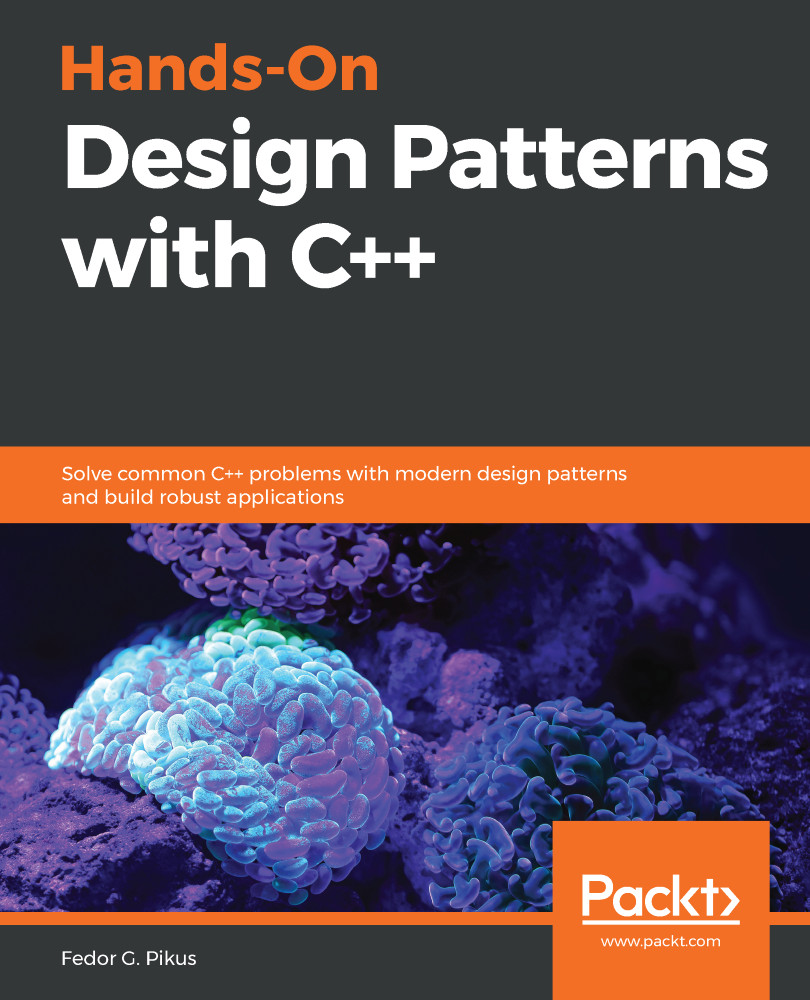In this chapter, we have learned why constructors cannot be made virtual, and what to do when we really want a virtual constructor anyway. We have learned how to construct and copy objects whose type becomes known at runtime by using the Factory pattern and one of its variations. We also explored several implementations of the Factory constructor that differ in the way that the code is organized and that the behavior is delegated to different components of the system, and compared their advantages and trade-offs. We have also seen how multiple design patterns interact with each other.
While in C++, the constructor has to be invoked with the true type of the object to construct—always—this does not mean that the application code has to specify the complete type. The Factory pattern allows us to write code that specifies the type indirectly, using an identifier...


